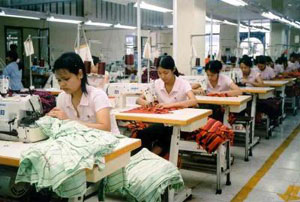Sewing Machinist
Tasks & duties

Sewing machinists may do some or all of the following:
-
discuss daily work requirements with supervisors
-
set up their sewing machines and overlockers
-
select threads
-
work on part or all of the product
-
clean and maintain sewing machines
-
make sure tasks are finished in a set time and to a high standard
-
repair or alter items and do some hand sewing
Skills & knowledge

Sewing machinists need to have:
-
good sewing skills and knowledge of different sewing methods
-
knowledge of different types of sewing equipment
-
knowledge of the types of products they are sewing and their construction
-
knowledge of different fabrics
-
problem-solving skills
-
practical skills for cleaning and maintaining sewing machines
-
knowledge of needle sizes and machine-threading techniques
Sewing machinists in small businesses may also need to have clothing marking and cutting skills.
Entry requirements
There are no specific entry requirements to become a sewing machinist, but knowledge of fabrics, sewing or craftwork is an advantage, and a certificate in machining skills is useful.
Secondary education
Three years of secondary education is recommended. Useful subjects include clothing and textiles and other practical technology subjects.
Training on the job
Skills are gained on the job and people can work towards a National Certificate in Clothing Manufacture.
Useful experience
Useful experience for sewing machinists includes:
-
dressmaking
-
craftwork
-
work with fabrics
-
any other sewing work
Related courses
Garment Making
For more information, please refer to Career Services.
Document Actions
